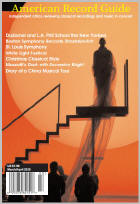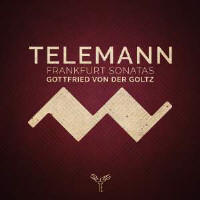Texte paru dans: / Appeared in: |
|
|
Outil de traduction ~ (Très approximatif) |
|
|
Reviewer: Michelle
Thompson
For all his extraordinary
versatility—it’s difficult to think of a contempora-neous genre he didn’t
work in—Telemann was never particularly interested in istrumental
virtuosity. His sonatas and concertos, while reliably good, rarely aim at
exalted technical feats or even at unusual compositional ones. It’s not,
therefore, especially odd to find pockets of instrumental material among his
works that remain essentially unexplored, like these six sonatas. They date
from 1715, soon after Telemann, following the unexpected death of his young
wife after only three years of marriage, relocated from the court of
Eisenach to
Frank-furt-am-Main.
That the stability of a city job struck him as preferable to the whims of a
court, however high the quality of its musicians, seems likely; at all
events, the composer was hired on the spot and assumed his new duties almost
immediately. These six sonatas, for “solo violin, accompanied by the
harpsichord”, are among the earliest music written in the new position.
Despite the name, these aren’t violin-and-harpsichord sonatas after the
manner of Bach’s six, with fully written-out keyboard parts, but sonatas for
violin and continuo. For the most part here, that means Torsten Johann on
harpsichord and Annekatrin Beller on cello, but sometimes Johann switches to
portative organ, and in a few places he is joined by Thomas Boysen on
theorbo. In one movement Boysen plays without Johann, and in another Johann
seems to be using a lute-stop on his harpsichord. In 5:I the first half uses
organ and theorbo, the repeat harpsichord; in the second half the pattern is
reversed. These new continuo combinations all appear, weirdly, only in the
last two sonatas of the six. Gottfried von der Goltz is the violinist here,
and a most adept one he is, though tending towards the strident end of the
historical-violin gamut. There isn’t the easy drawing-out of sound you get
from players like Andrew Manze or Rachel Podger or Erich Höbarth; the sound
rather appears pressed out, grittily, with a slow-moving bow, and there’s
little attempt to use the instrument’s own resonance in aid of a lighter,
more flowing kind of production. The intonation, however, is spectacular,
and the fast movements— elaborate finger-twisters every one, for all that
they seldom leave first position— are brilliantly played. For the
tone-production reasons I’ve already mentioned, the slow movements fare less
well, and there could be more variety and shape in the simpler, less
fiendish material in them than there is. I should note that while all six
sonatas have four movements arranged slow-fast-slow-fast, in Sonatas 1, 3,
and 4 the movement titles are standard Italian ones (Adagio, Allegro, Largo,
Vivace), but in 2, 5, and 6 they are Allemanda, Corrente, Sarabanda, and
Giga—the “core” baroque dance suite. For practical purposes, it’s difficult
to tell the two forms apart. | |
|
|
|
|
Cliquez l'un ou l'autre
bouton pour découvrir bien d'autres critiques de CD |
|




